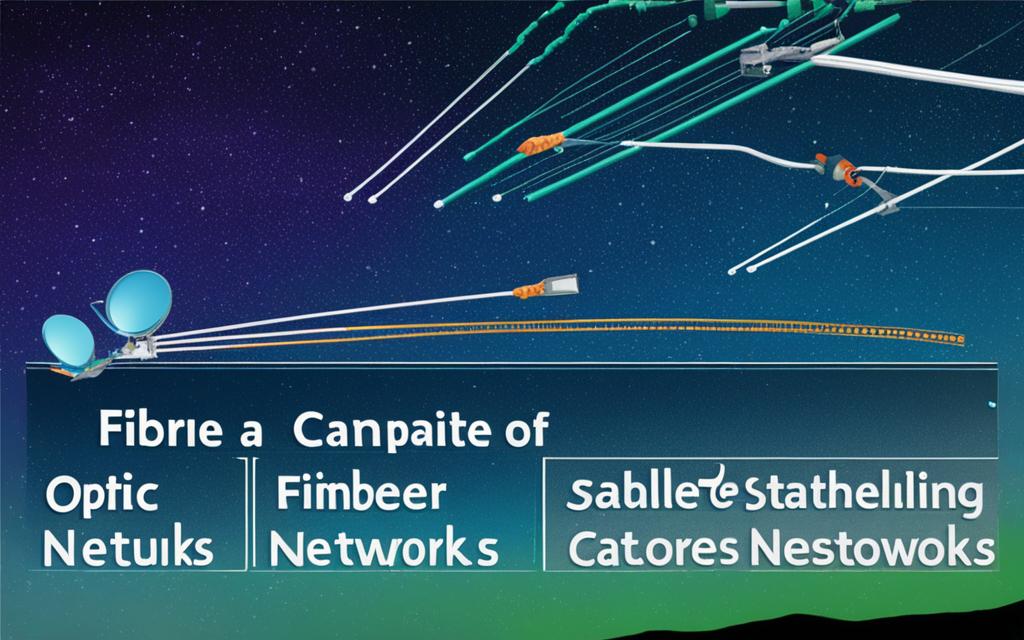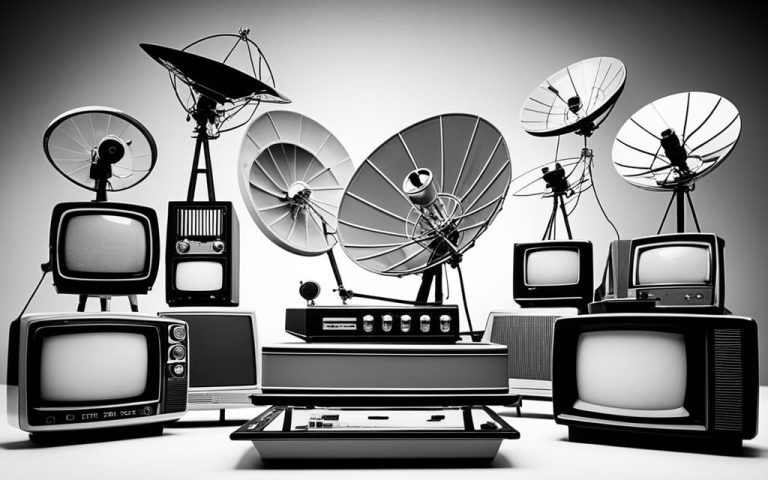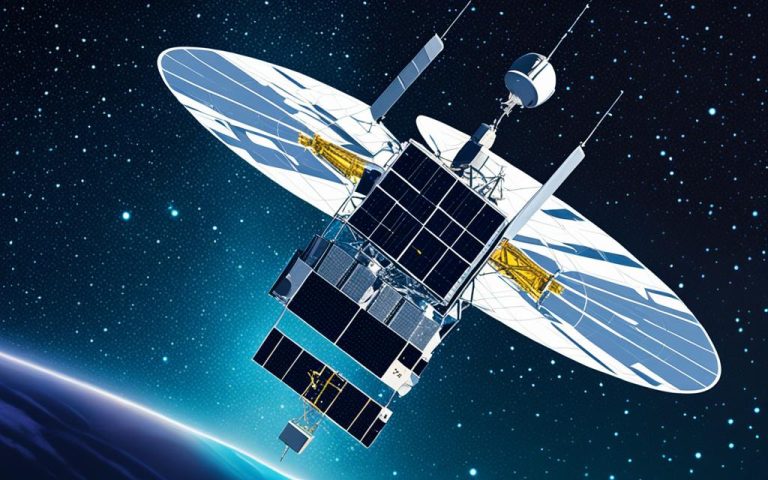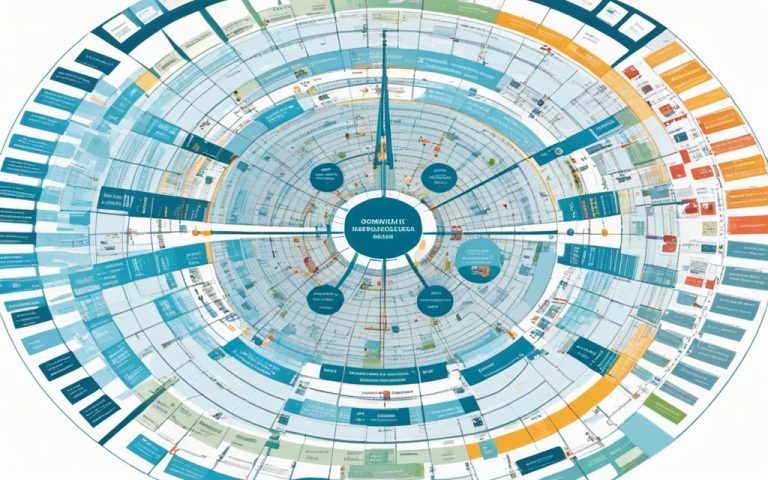Welcome to our comprehensive analysis of satellite vs fiber optic networks. In this article, we will compare these two types of broadband connections to help you understand their differences and make an informed decision about which one is right for your internet needs.
Satellite and fiber optic networks offer distinct advantages and considerations. By examining their features, technology, speed and performance, reliability and availability, as well as cost, we aim to provide you with valuable insights to guide your decision-making process.
How the Technology Works
Satellite technology and fiber optic technology are two distinct methods of transmitting data. Understanding how these technologies work can help in assessing their differences and advantages.
Satellite Technology:
Satellite technology relies on the use of satellites positioned in space to transmit data wirelessly. When you access the internet via satellite, a satellite dish installed on your roof receives signals from these orbiting satellites. The received data is then sent to your router, allowing you to connect wirelessly to the internet.
However, satellite technology comes with a caveat – long latency. This occurs due to the considerable distance that signals must travel between the satellite and your location. The delay in signal transmission can impact the overall performance of satellite internet.
Fiber Optic Technology:
Fiber optic technology, on the other hand, utilizes fiber optic cables made of glass or plastic. These cables transmit data using light signals, providing several advantages over satellite technology.
By using light to transmit data, fiber optic technology allows for faster speeds and lower latency compared to satellite. This is because light signals travel at incredible speeds, enabling seamless data transmission.
While the technology behind satellite and fiber optic networks may seem similar in capturing and transmitting data, the use of satellites in space versus fiber optic cables makes a significant difference in terms of performance and reliability.
Speed and Performance
When it comes to internet speed and performance, satellite and fiber optic networks offer distinct capabilities. Let’s explore the differences between the two:
Satellite internet providers typically offer download speeds of around 40Mbps, with upload speeds averaging around 3Mbps. These speeds may be sufficient for basic web browsing and email usage, but they may not meet the demands of activities such as online gaming, streaming high-definition content, or large file uploads.
In contrast, fiber optic internet delivers significantly faster speeds compared to satellite internet. It can provide download and upload speeds up to 1Gbps (symmetrical). This means that you can download and upload files at lightning-fast speeds, stream high-quality videos without buffering, and enjoy lag-free online gaming experiences.
Fiber optic internet’s impressive speeds make it ideal for households with multiple users who engage in bandwidth-intensive activities simultaneously. Whether you’re a work-from-home professional who needs to transfer large files, a family that loves streaming movies and TV shows, or a gamer who requires low latency, fiber optic internet can handle your needs with ease.

The Benefits of Fiber Optic Internet Speed
With fiber optic internet’s exceptional speed and performance, you can experience several advantages:
- Seamless streaming: Enjoy your favorite movies, TV shows, and online content without annoying buffering or interruptions.
- Smooth online gaming: Engage in fast-paced online gaming without experiencing frustrating lag or delays.
- Rapid file transfers: Transfer large files, such as high-resolution images or video projects, in a matter of seconds.
- Efficient cloud computing: Access and manipulate cloud-based documents, collaborate in real-time, and backup data swiftly.
For these reasons, fiber optic internet is the preferred choice for users who require consistent and high-speed internet connectivity for their demanding online activities.
Reliability and Availability
Satellite internet relies heavily on clear weather conditions to maintain optimal functionality. Unfortunately, any storms or extreme weather can disrupt the satellite’s communication, resulting in unreliable internet connections. Unlike satellite internet, fiber optic internet is not affected by weather conditions and offers a higher level of reliability.
Fiber optic cables, as the backbone of the technology, are known for their durability and resistance to environmental factors. They are impervious to electromagnetic interference, making them highly reliable even in challenging conditions. This ensures a consistent and stable internet connection for users, regardless of the weather.
However, it is important to note that satellite internet has an advantage in terms of availability, particularly in remote areas where laying fiber optic cables may be challenging or cost-prohibitive. The ability to transmit data wirelessly via satellites makes satellite internet accessible to a wider range of users.
To summarize, satellite internet reliability can be hindered by adverse weather conditions, while fiber optic internet reliability remains unaffected by such factors. Availability-wise, satellite internet triumphs in remote areas where fiber optic infrastructure is limited.
Cost Comparison
When considering internet options, cost is an important factor to take into account. Let’s compare the cost of satellite internet and fiber optic internet.
Satellite Internet Cost:
Satellite internet service packages can be expensive, with prices reaching up to £100/month. In addition to the monthly service fees, some satellite internet providers may also charge for the installation of the satellite dish. These additional costs can significantly impact the overall expense of satellite internet.
Fiber Optic Internet Cost:
On the other hand, fiber optic internet can be more affordable, depending on the internet service provider. Many fiber optic internet providers offer competitive pricing and various package options to suit different needs and budgets. This allows users to find a cost-effective solution that meets their specific requirements.
| Service Provider | Package | Monthly Cost |
|---|---|---|
| Provider A | Basic | £50/month |
| Provider B | Standard | £70/month |
| Provider C | Premium | £90/month |
As shown in the table above, fiber optic internet providers offer a range of package options at varying price points. Users can select a package that aligns with their budget and internet requirements.
It’s important to consider the cost of both satellite and fiber optic internet when making a decision. While satellite internet may be more expensive and involve additional installation costs, fiber optic internet offers competitive pricing with a variety of package options. Ultimately, your budget and specific internet needs will determine which option is more cost-effective for you.
Conclusion
In conclusion, when comparing satellite and fiber optic networks, it is evident that fiber optic networks offer superior performance and reliability. With faster download and upload speeds, minimal latency, and greater overall reliability, fiber optic internet is the preferred choice for most users.
While satellite internet may be more widely available in remote areas, it comes at a higher cost and is prone to disruptions during adverse weather conditions.
Ultimately, the choice between satellite and fiber optic networks depends on factors such as location, budget, and specific internet needs. However, for most users seeking a fast, reliable, and low-latency internet connection, fiber optic networks prove to be the better option.
FAQ
What is the difference between satellite and fiber optic networks?
Satellite internet uses a satellite dish to transmit data wirelessly, while fiber optic internet relies on fiber optic cables to transmit light signals.
How does satellite technology work?
Satellite technology works by transmitting data wirelessly through satellites in space. The satellite dish on your roof catches the data and sends it to your router.
How does fiber optic technology work?
Fiber optic technology uses fiber optic cables to transmit data through light signals. This allows for faster speeds and lower latency compared to satellite.
How fast is satellite internet?
Satellite internet providers offer download speeds of around 40Mbps, with upload speeds averaging around 3Mbps.
How fast is fiber optic internet?
Fiber optic internet can provide download speeds up to 1Gbps and upload speeds up to 1Gbps (symmetrical).
Is satellite internet affected by weather conditions?
Yes, satellite internet requires clear weather conditions to function optimally. Any storms or extreme weather can disrupt the satellite’s communications, leading to unreliable internet connections.
Is fiber optic internet affected by weather conditions?
No, fiber optic internet is not affected by weather conditions and offers more reliability compared to satellite.
How much does satellite internet cost?
Satellite internet service packages can be expensive, costing up to £100/month. Some satellite internet providers may also charge for the installation of the satellite dish.
How much does fiber optic internet cost?
The cost of fiber optic internet can vary depending on the internet service provider. However, it is generally more affordable compared to satellite internet. Fiber optic internet providers offer competitive pricing and various package options to suit different needs and budgets.
Which is better, satellite or fiber optic internet?
In terms of speed, reliability, and latency, fiber optic networks outperform satellite networks. Fiber optic internet provides faster download and upload speeds, minimal latency, and greater reliability. However, the choice between satellite and fiber optic networks ultimately depends on location, budget, and specific internet needs.



















